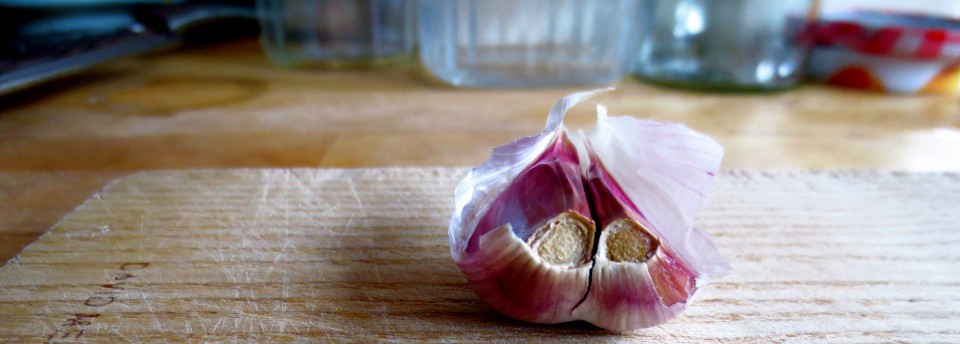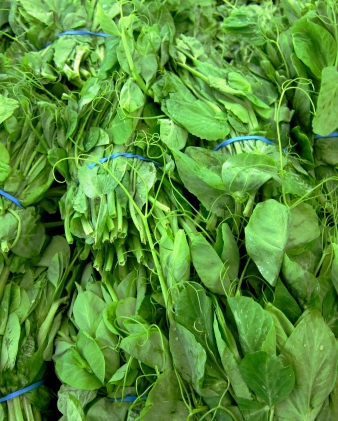Tags
Cookbook, Cooking, Elizabeth David, Food, Ingredients, Italy, Recipes, Spring, Yoghurt, Yogurt
There is something quite lovely about peas. You can grow them easily and their tendrils are pretty, curling things that latch on to poles and wind their way upwards and sideways as if trying to escape the garden, and their fate, in slow motion.
If you’re feeling in any way disconnected from nature, or yourself, sitting down to shell a mound of pea pods will slow your heart rate and give you room to ponder. You can watch the news and get a good rhythm going, with a pot for the empty pods and one for the peas. Use the empty pods for broth and wrap the peas in a damp towel so they don’t dry out. I was surprised by the colour and the taste. We have been seduced by the frozen pea’s excessive sweetness, its nursery softness, and now it’s hard to go back. Pretend you’re Edwardian.
I am not decrying frozen peas – I love them and would happily live on them all year round. But it’s a shame in the spring to pass by peas in the pod. Their tendrils are sold by the wodge at farmers’ markets here (above in their fetching blue rubber bands).
You can use the leaves as a salad ingredient or wilt them in butter. They’re lovely in a frittata along with some peas and scallions. And then there is bacon, of course. Or pancetta, if you’re a bit posh. And ham, properly thick and strongly permeating. Peas also have a natural affinity with ricotta – or perhaps it is I who have the affinity.
Ricotta (meaning “re-cooked” from the whey of semi-hard cheeses) is a soft, sheep’s milk cheese originally from Rome and is at its best in spring, eaten spankingly fresh with a little salt and black pepper. It has a wonderful blankness, aerates easily and doesn’t smother like cream can, meaning that the peas remain the star of the show. I know people make ricotta; so much is dependent on the quality of the milk. I made ‘yoghurt cheese’ instead (also known as labneh), and treated it in a similar way, along with some lemon zest and a touch of rosemary.
Both recipes below are inspired by Italian Food by Elizabeth David, a book I can’t read for long without the need to rest my head in my hands and inhale memories of my time there. It is almost impossible not to feel longing. I love food, what can I say? And Italy is where for me the heart of good food lives. Espresso and cake, olive oil, vinegar, leaves, lemons, hot cornetti steaming at midnight from a paper bag, tomatoes crackling with salt. Thinnest of thin pizza, charred and warm. I am a ruined woman.
Piselli al Prosciutto (green peas and ham)
Adapted from Elizabeth David, Italian Food
2lbs shelled or frozen peas
A small onion
1 oz (or a small knob) of butter
3 oz of very good cooked ham cut into strips
Melt the chopped onion in the butter, and let it cook very gently, so that it softens without browning. Put in the shelled (or frozen) peas and a little water. After 5 minutes, add the ham. Add a little more water here if it needs it. In another 5-10 minutes the peas should be ready.
Yoghurt cheese with lemon zest and rosemary
Adapted from Hugh Fearnley-Whittingstall, Easy Cheesy, The Guardian
Makes about 350g. If you want this for pudding instead, withhold the pepper, serve with a scattering of berries, or dried fruit, some toasted nuts and a drizzle of honey.
1/2 tsp black peppercorns
1kg whole milk organic yoghurt
1 tsp of salt
1 small sprig rosemary leaves, finely chopped
Zest of a lemon
Extra virgin olive oil, for preserving
Crack the pepper in a pestle and mortar, or with the end of a rolling pin in a bowl, until it’s slightly coarser than if it came from a pepper mill. Stir it into the yoghurt with the salt, lemon zest and rosemary, then spoon the mixture into a scrupulously clean jelly bag or a double layer of damp muslin/cheesecloth (or a sterilized hankie). Place in a sieve resting over a bowl or jug in the fridge (or suspend it over the sink or hanging from a door knob somewhere cool), for two days.
Discard the whey. Lightly oil your hands and roll the yoghurt cheese into balls and place in a sterilized jar. Pour enough oil over to cover. They’ll keep in this way for a few weeks in the fridge. When you’re ready to use a ball, you could roll it in some finely chopped herbs and a further scattering of zest. Or if you want to go the Labneh route, you could roll them in spices such as cumin or paprika.





Beautiful photos, as always.
Thank you 🙂
Ruined? Inspired I’d say!
Ruined and inspired – how’s that? Thanks for visiting 🙂
Ruined you for the mundane maybe, inspired all else!
“Ruined woman” – Oh, God, there goes the inheritance. This is a lovely post. In our local farmers market there a Cambodian family that sells all manner of local–but obscure, at least to me–greens. A couple of years ago, the mom introduced me to pea tendrils (I think it was one of our first blog posts), which make a great addition to a stir-fry. I like your traditional pairing with ham (and butter!) to go with herby yogurt cheese. On a scale of “fun things to photograph” fresh peas figure near the very top, with, say, fried beef liver near the bottom. Your peas inspire hope. Ken
Thank you, Ken. Hopeful peas…I like it. I will now revisit your blog to find your tendrils (matron). Thank you for lovely feedback as always.
Can’t wait for our farmer’s market to open (3 more weeks!)- this looked so beautiful and delicious –
Thank you. Much appreciated 🙂
Note to self: Do not read this as work…I am drooling….I love fresh peas…Thanks for this recipe – they will be at the farm stands before I know it! Not for at least another month, up here in Canada 🙂
I relate to the “ruined woman” comment! 🙂
Thank you, Connie. Enjoy your pea harvest. Thank you very much for visiting 🙂
The yoghurt cheese looks wonderful and interesting! I would love to try it someday!
Hello there 🙂 Yes, give it a try. It’s very satisfying.
Didn’t know you could do that with yogurt. Also, “wodge” is a great word.
Pingback: Onward | Stories from the Stove
Pingback: A treacherous herb | Stories from the Stove